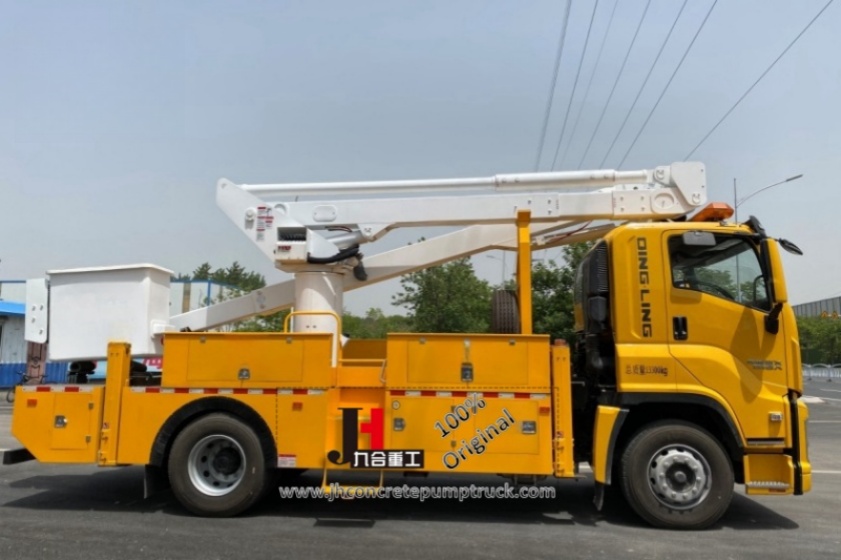News
About the leveling mechanism of aerial work vehicle
Sep. 04, 2024
The function of the leveling mechanism is to ensure that the platform always remains horizontal when the working arm changes its amplitude, so that the operator can stand steadily. Aerial work vehicles usually use the following three balancing methods: mechanical leveling, hydraulic leveling, and electro-hydraulic leveling.
1. Mechanical leveling method
The mechanical leveling method is to set one or more parallelogram linkage mechanisms, chains, steel wires, etc. between the turntable and the hanging basket, and use the principle that the opposite sides are always parallel during the deformation of the parallelogram to achieve the balance of the hanging basket. Generally, the folding arm boom structure adopts the mechanical leveling method. Mechanical leveling has the advantages of simple structure and high reliability, but the disadvantage is that it is large in size and occupies space.
2. Hydraulic leveling method
The hydraulic leveling method is to set a hydraulic cylinder between the turntable and the boom, and between the platform and the boom. The large chambers of the two cylinders are connected to each other, and the small chambers are connected to each other, forming a closed system; the lower cylinder is the active cylinder, and the upper cylinder is the slave cylinder. When the boom changes its amplitude, the active cylinder is extended and retracted to press the hydraulic oil into the slave cylinder. Since the cylinder diameter and rod diameter of the two balancing cylinders are exactly the same, when the active cylinder extends or retracts a certain length, the slave cylinder retracts or extends the same length, so that after the boom elevation angle changes, the platform changes the same angle to compensate, thereby achieving the balance of the hanging basket. The hydraulic leveling method is suitable for telescopic boom models with a relatively small operating height. The advantages are high safety and reliability, and large leveling load capacity. The disadvantages are that since the leveling principle is approximately equal, there are errors in the leveling process, and a long connecting oil pipe needs to be arranged in the boom.
3. Electro-hydraulic leveling method
The electro-hydraulic leveling method adopts the negative feedback control principle. A horizontal sensor is installed on the platform. When the working arm changes its amplitude, the horizontal sensor detects that the platform is tilted. The control unit sends a control signal to the solenoid valve to drive the leveling hydraulic cylinder to extend and retract, and move in the direction of reducing the inclination angle between the platform and the ground. When the inclination angle is less than the allowable value, the leveling stops. Electro-hydraulic leveling is suitable for hybrid boom models with complex boom structures that cannot be achieved by the other two leveling methods. The advantage is that it is easy to arrange, and the disadvantage is that there is always a leveling error, and the leveling lags behind the boom change.







